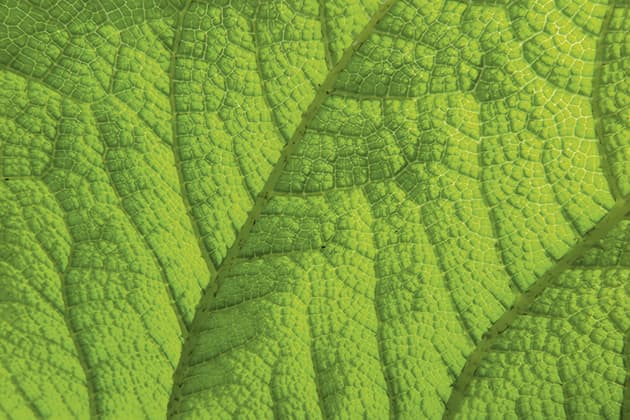Translucent objects – those that diffuse or distort the light hitting them – make ideal photographic subjects, when viewed up close. Stained glass, tissue paper and leaves are good examples. If you’ve ever visited Sainte-Chapelle, the Gothic chapel in Paris, you will observe the breathtaking effect light diffused by coloured glass has on a building. But you can find subjects that benefit from being backlit anywhere, such as a leaf with attractive venation or the texture changes when you hold a petal to the light. You can shoot objects in their natural environment, but for full control, take them home and set up a mini studio in front of a window.
- Try taping a leaf to a window and keep the leaf as flat as possible against the glass. You could also try placing leaves on a lightbox and shooting down on them. It can help to press them in a book first.
- If you have a DSLR rather than a mirrorless camera, use the mirror lock-up feature. It instructs the camera to flip the mirror out of the way before activating the shutter, allowing vibrations to die down.
- Macro subjects require precise adjustments to focusing, so it’s worth investing in a focusing rail to move the camera by just a few millimetres. An example is Manfrotto’s 454 Micro- positioning Sliding Plate.
- Ensure you clean the glass before taping your leaf to the window, because any dirt might appear as unsightly shadows in your shot. Give your leaf a quick sweep with a paintbrush to remove any debris.







